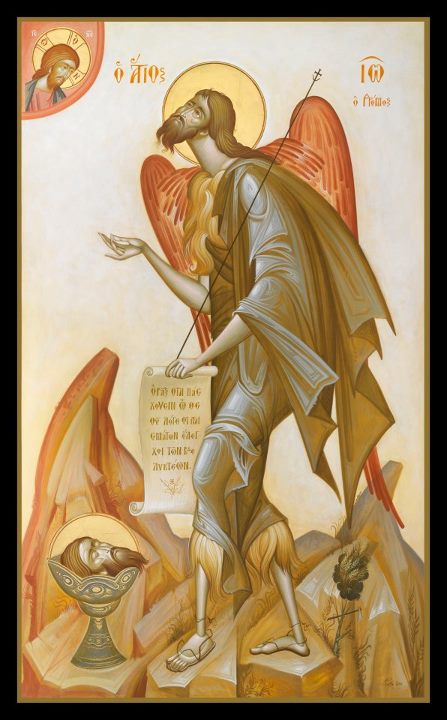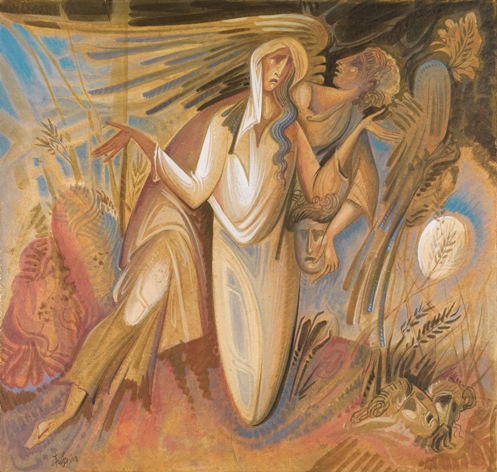 A few days ago I read an interesting interview with a contemporary Greek iconographer, George Kordis, “The Art of Icon Painting in a Postmodern World.” Several things caught my eye, the least of which wasn’t the style of this modern iconographer and artist. Since we just celebrated the Nativity of Saint John the Baptist on June 24, I’ll share Kordis’s icon of Saint John here, although this icon depicts his beheading, not his nativity.
A few days ago I read an interesting interview with a contemporary Greek iconographer, George Kordis, “The Art of Icon Painting in a Postmodern World.” Several things caught my eye, the least of which wasn’t the style of this modern iconographer and artist. Since we just celebrated the Nativity of Saint John the Baptist on June 24, I’ll share Kordis’s icon of Saint John here, although this icon depicts his beheading, not his nativity.
If you click on the above article, you can see more of his icons, and also a couple of his secular paintings. I actually like his secular work better than his icons. I think it’s because I prefer a different style of iconography—I like icons that have darker lines and more primitive characteristics. Kordis’s icons are beautiful, but they are very transparent—almost ghost-like—and their strangeness distracts me from their purpose—to draw the viewer to reverence the saints depicted and to worship God through the images.
But I do like what he says about his use of the same Byzantine style of his icons for his secular pieces:
The use of the Byzantine painting mode is, I believe, the bridge that joins everything and gives the impression that even the fallen human reality is not excluded, that even there we find a flavor of the light of the Church. There is everywhere hope and depth.

If you take time to read the entire interview, you might also want to read the comment left at the end by Charleston architect, Andrew Gould. I agreed with most of what he says, even noting the similarity of Kordis’s work to Gregory Kroug. If you’re interested in art or architecture, you might like to read his comments. I’m only going to share part of what he says about the tradition of iconography as it applies to Kordis:
Whether or not one entirely likes Kordis’ icons, I think everyone should agree that it is healthy for gifted iconographers to occasionally push the envelope and experiment at the edge of canonical norms. Of course, most such experiments will not be wholly successful, but occasionally something new arises that has real merit and influences others, and this is how the tradition evolves.
Indeed, this is how the tradition evolves. I remember when I was writing/painting icons and was concerned about what “style” I would adopt. Since I’m not Russian, Greek or Romanian—and I studied under instructors from all three traditions—I wondered how my own style might evolve. My spiritual mother at the time—Mother Gabriella, Abbess at Holy Dormition Monastery in Grand Junction, Michigan—encouraged me to simply pray and paint, follow the canonical guidelines for icons, and let the style evolve organically.
Since I “retired” from painting icons shortly after she and I had that discussion, I guess I’ll never know what style my future icons might have taken. But I’m interested to watch what happens as other iconographers, like George Kordis, continue on this journey.